We are beyond blessed to experience a diverse array of fungal specimens that readily emerge, almost year round, here in Pescadero.
Mycelium Magic
By: Kim Kitchener
We are beyond blessed to experience a diverse array of fungal specimens that readily emerge, almost year round, here in Pescadero. Moist, coastal conditions and forests that are home to redwoods, pines and oaks provide ideal conditions for many mushrooms to make an appearance throughout the winter, spring, and fall seasons. It is possible to find some kind of mushroom even in the summer months tucked around decaying branches and creekside, waterlogged areas.
Mushroom hunting is one of my favorite activities; I look forward to the first rains that come around late October or November. Like a divine scavenger hunt, I am filled with joy and excitement as the fungus friends begin to emerge, seemingly out of nowhere, in places high and low, expected and surprising. Every year, I am amazed to find new specimens as well as familiar faces. Throughout the years I have amassed hundreds of photos of my mushroom adventures, the highlights of which I’m very excited to share. I hope to encourage readers to get out and explore your neighborhoods, forests and urban spaces; once you start looking, I am certain you will be startled by how many mushrooms are hanging out right under your toes! As you venture into the forest in search of mycelium magic, be cautious of where you step; while picking mushrooms does not harm the mycelium network all mushrooms emerge from, it is quite simple to disrupt the network while foraging paths and kicking up soil on your way to a sighting. Be respectful of the forest, don’t eat any mushroom you are uncertain of, and most importantly, happy hunting!
Disclaimer: The following is not intended to be a guide or reference to safely and properly identify and forage fungi edible or otherwise; rather it is meant to inspire curiosity and provide a brief glimpse into the magical world of the fungus found around the coastal region of Pescadero, California. There are many excellent guides and intensive identification texts as well as other inspirational readings referenced below that can help readers expand their fungus knowledge and wonderment. If you so chose to embark on the remarkable journey of discovering what mycelium magic awaits you in your locality, do your research, look for experienced mushroom guides in your area, and if you are ever uncertain of a mushroom’s identification, be on the safe side and do not eat!
Click through the slideshow below.
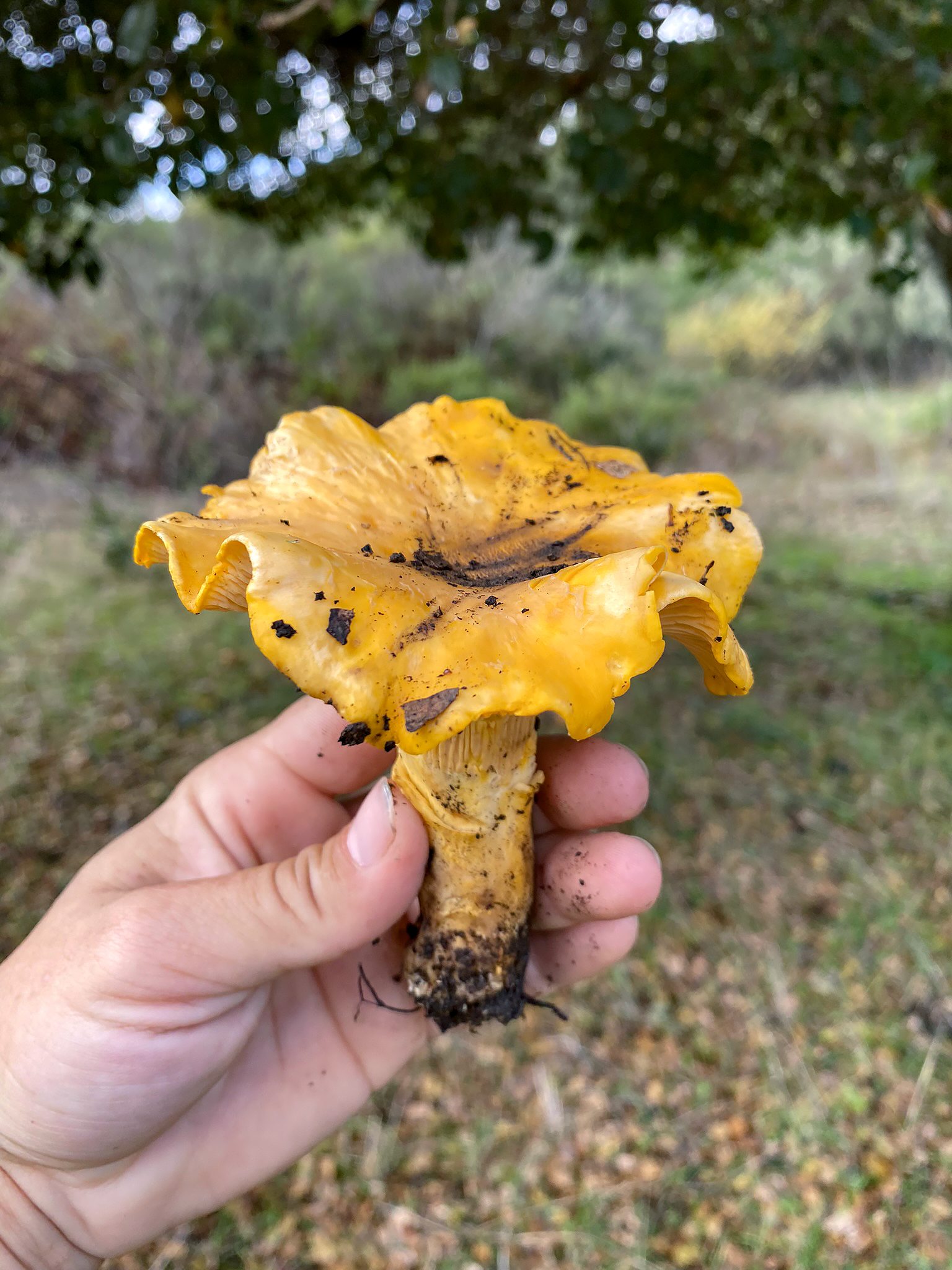
California Golden Chanterelle
Chantarulus californicus
One of the most recognizable and sought after fungi in California; as of 2024, officially recognized as our state mushroom. Many seek it out as an edible mushroom, and it is often found under native trees, particularly oak trees, with which chantarelles have a symbiotic relationship, helping to nourish and feed underground root systems. Found in abundance from October, following the first rains, to late March.
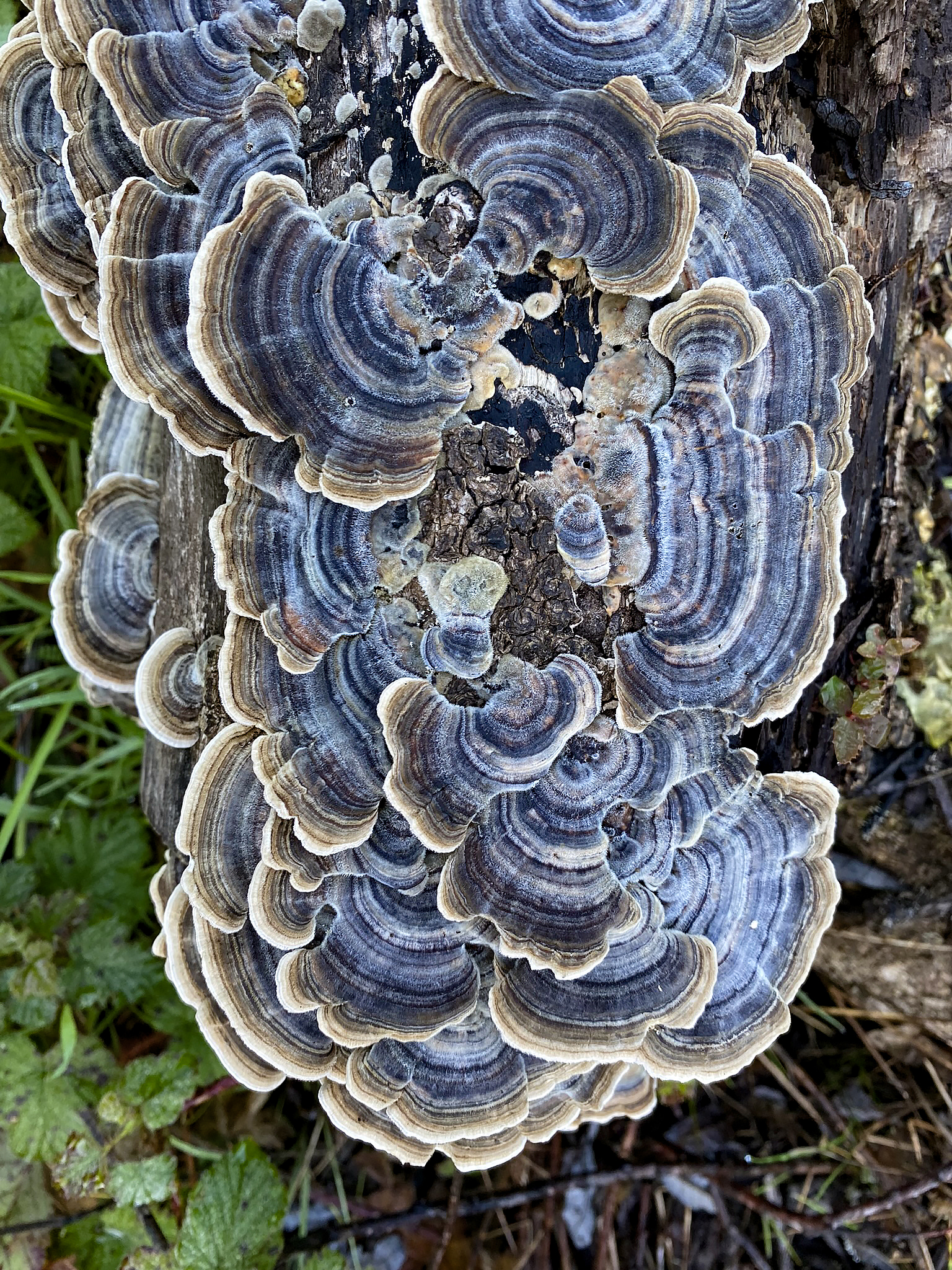
Turkey Tail
Trametes veriscolor also known as Polyporus versicolor and Coriolus versicolor
Easily spotted due to its magnificent display of color, turkey tails are a polypore or bracket fungi referring to their fan or shelflike qualities. Polypores assist in the decomposition of hard woods and as such, turkey tails are found growing on old tree stumps and hard wood trees. Turkey tails are not considered edible mushrooms, however are often used in teas, powders and tinctures for their medicinal properties. Their range expands to all over the world and are often found in abundance from October to April.
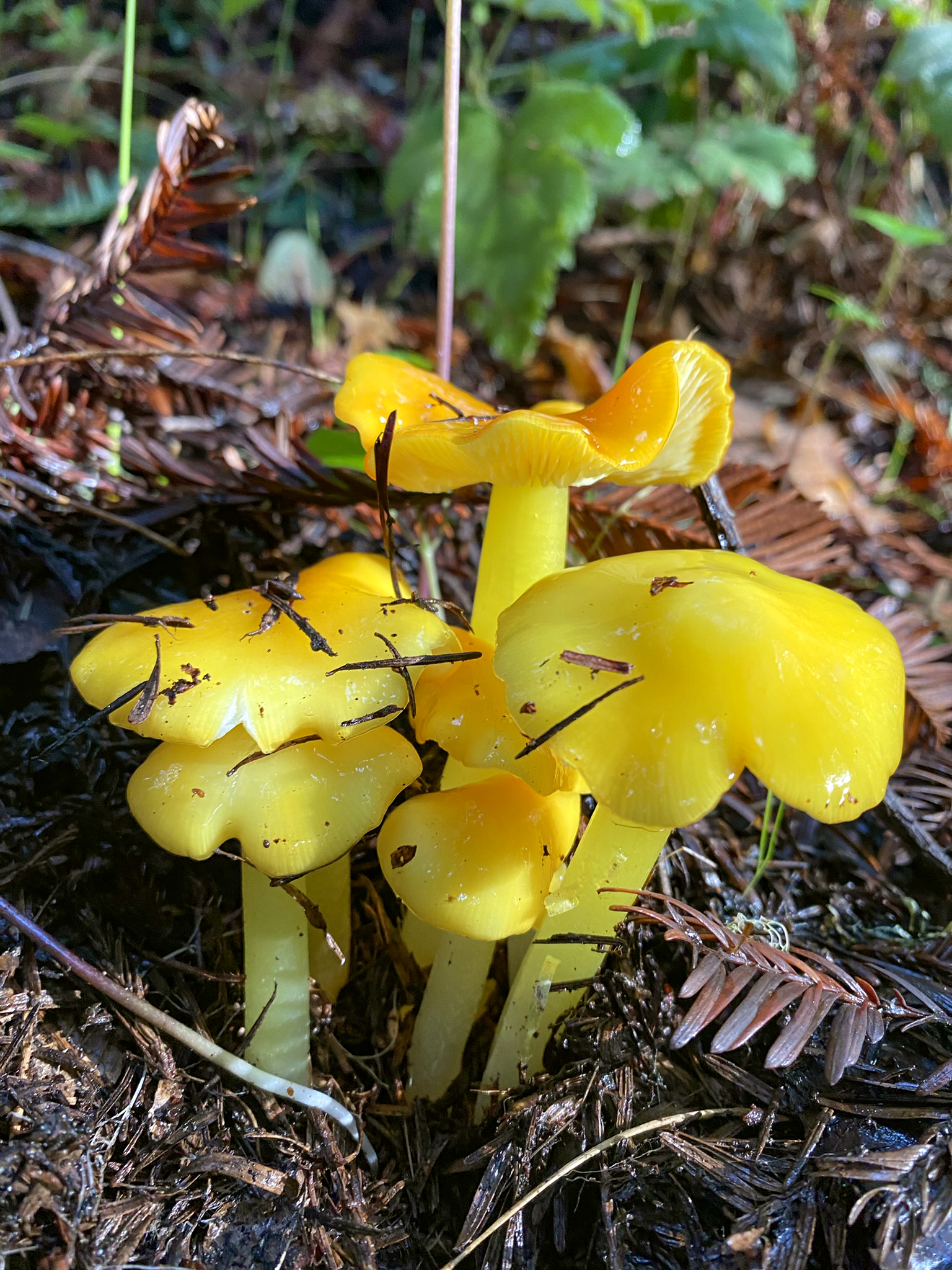
Golden Waxy Caps
Hygrocybe flavescens
A brilliantly colored Native California fungi, shows up proceeding winter rain events beginning in November and can be spotted further into spring after rain showers.
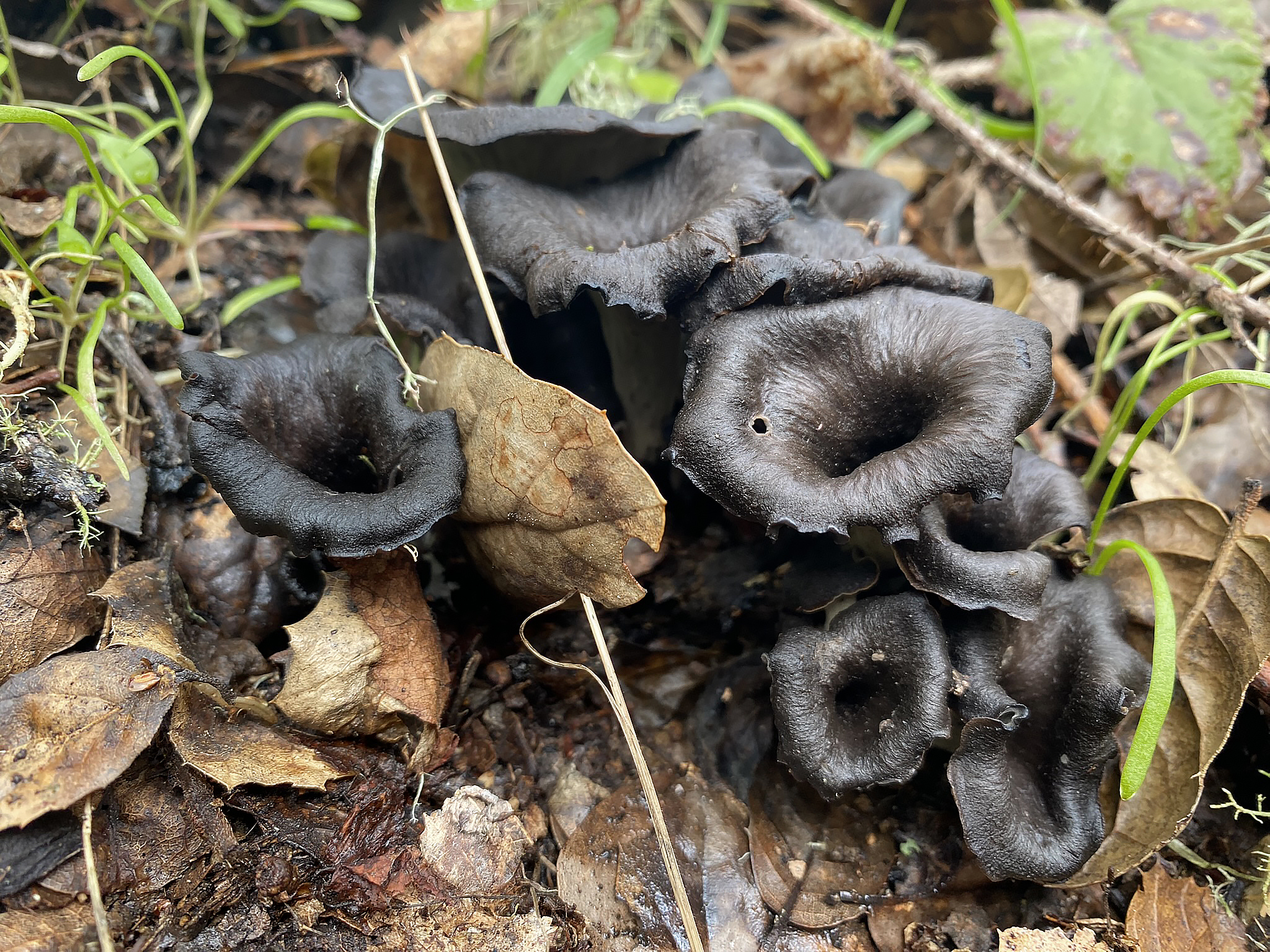
California Black Trumpet
Craterellus calicornucopioides
Personally, one of my favorite mushrooms to spot! Regarded as one of the most delicious edible fungi, I often find them in the most magical oak woodlands surrounded by rooreh (as known as miner’s lettuce) and ferns. Always special to happen upon these unique funneled clusters.
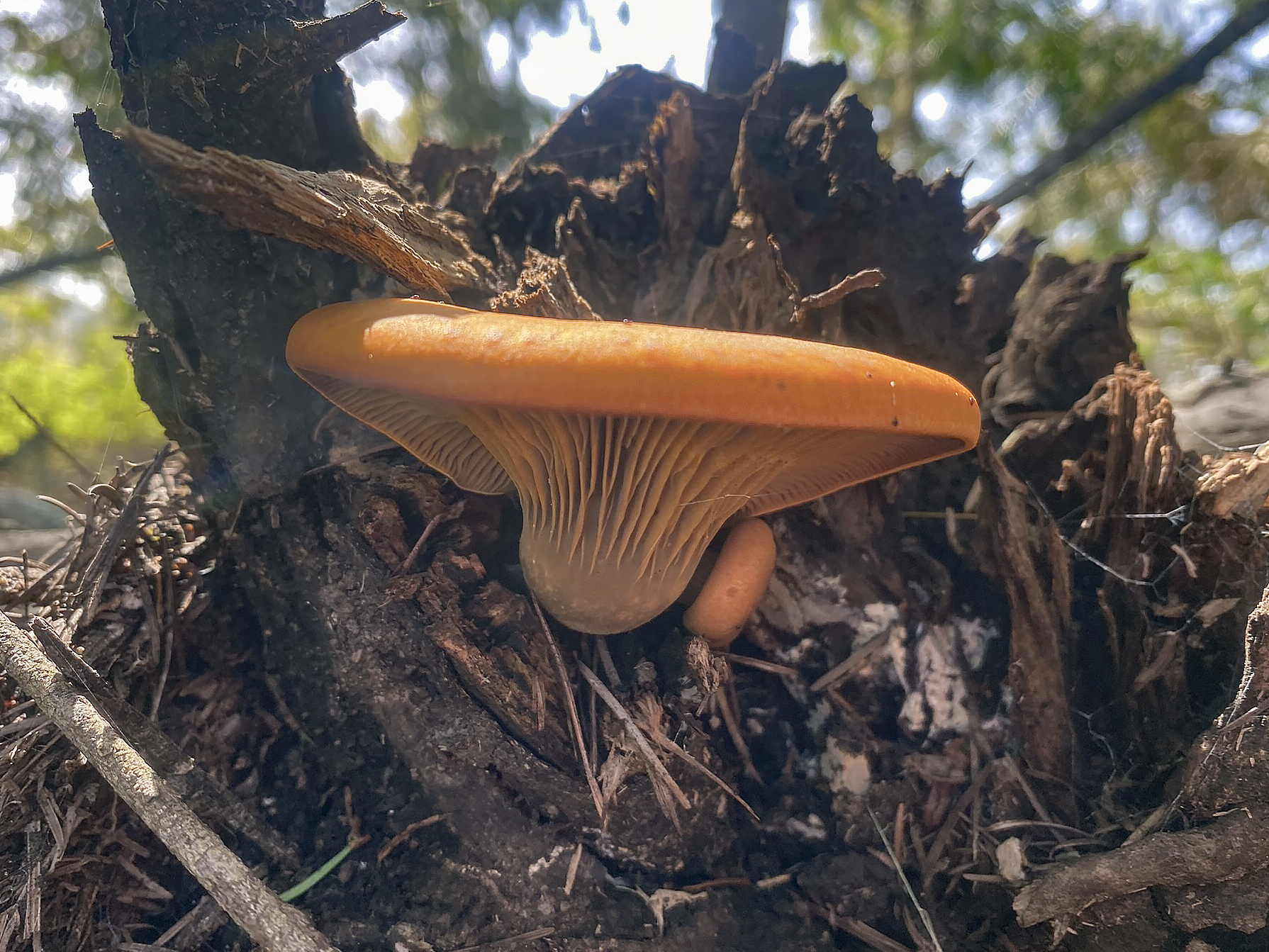
Western Jack-o’-lantern
Omphalotus olivascens
Shockingly bright orange fungi, native to California and Mexico, it can sometimes be mistaken for chantarelles but is NOT an edible mushroom. This species of mushroom has bioluminescent priorities and emits a low green glow on dark nights during spore production.
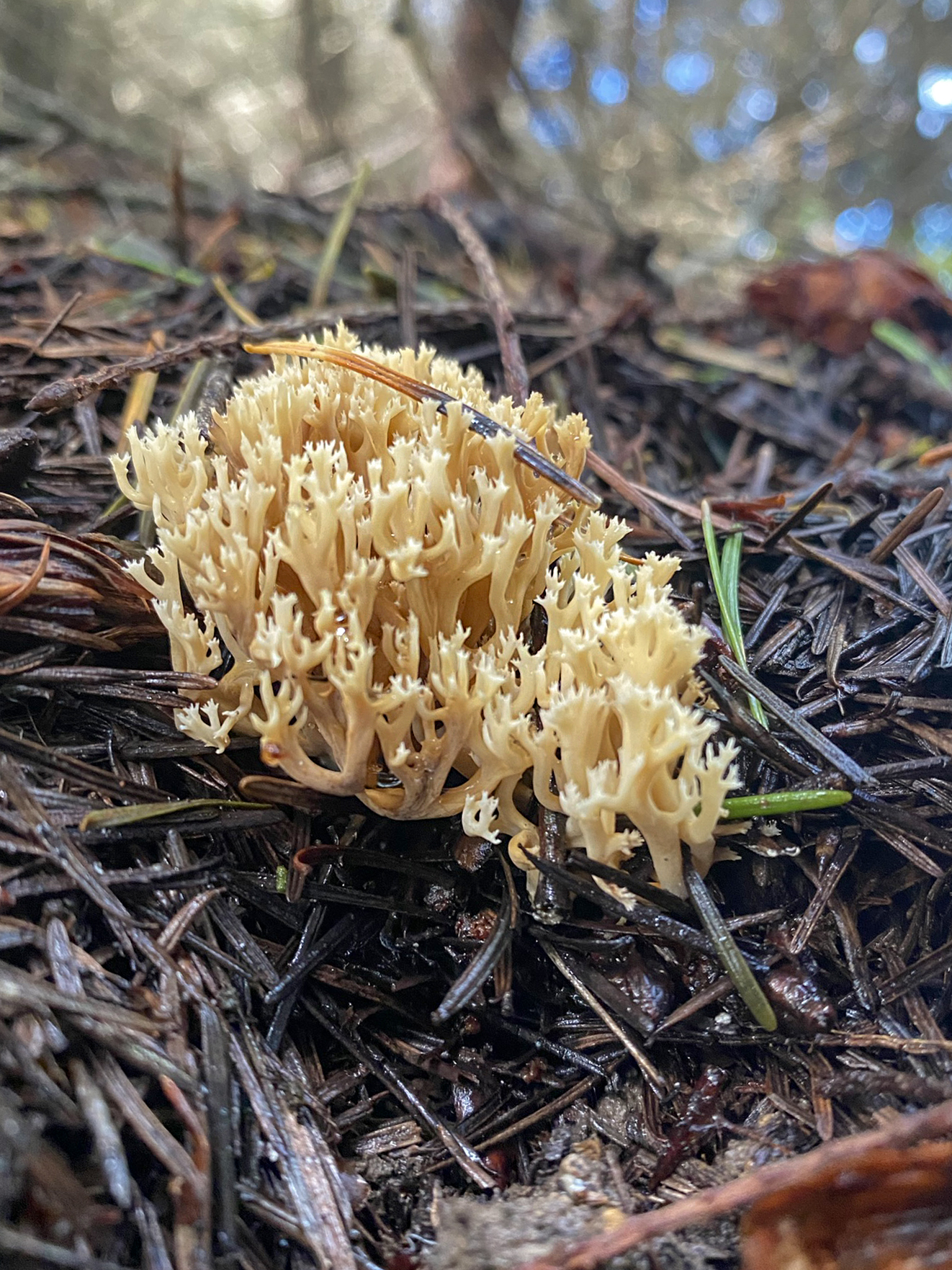
White Coral Fungus
Clavulina coralloides
Looking as though it comes from the sea, the coral fungus is aptly named and exciting to come across amongst pine stands and redwood duff. Emerging in late summer through winter, white coral fungus generally appears in clusters, and while edible it is not considered a great foraging mushroom due to its smaller stature and delicate nature. Very common to find in the coastal forests.

False Chanterelles
Hygrophoropsis aurantiaca
Found across the world, often growing in patches around pines and woodchips. Often mistaken for the proper chanterelle, it shares a similar emergence time (late August through the winter months) and is close in color. False chanterelles have a more downy, fuzzy cap as opposed to the true chanterelle’s rather wavy, frilly edge around the cap. There are conflicting opinions as to whether false chanterelles are edible or not; when in doubt, do not eat!
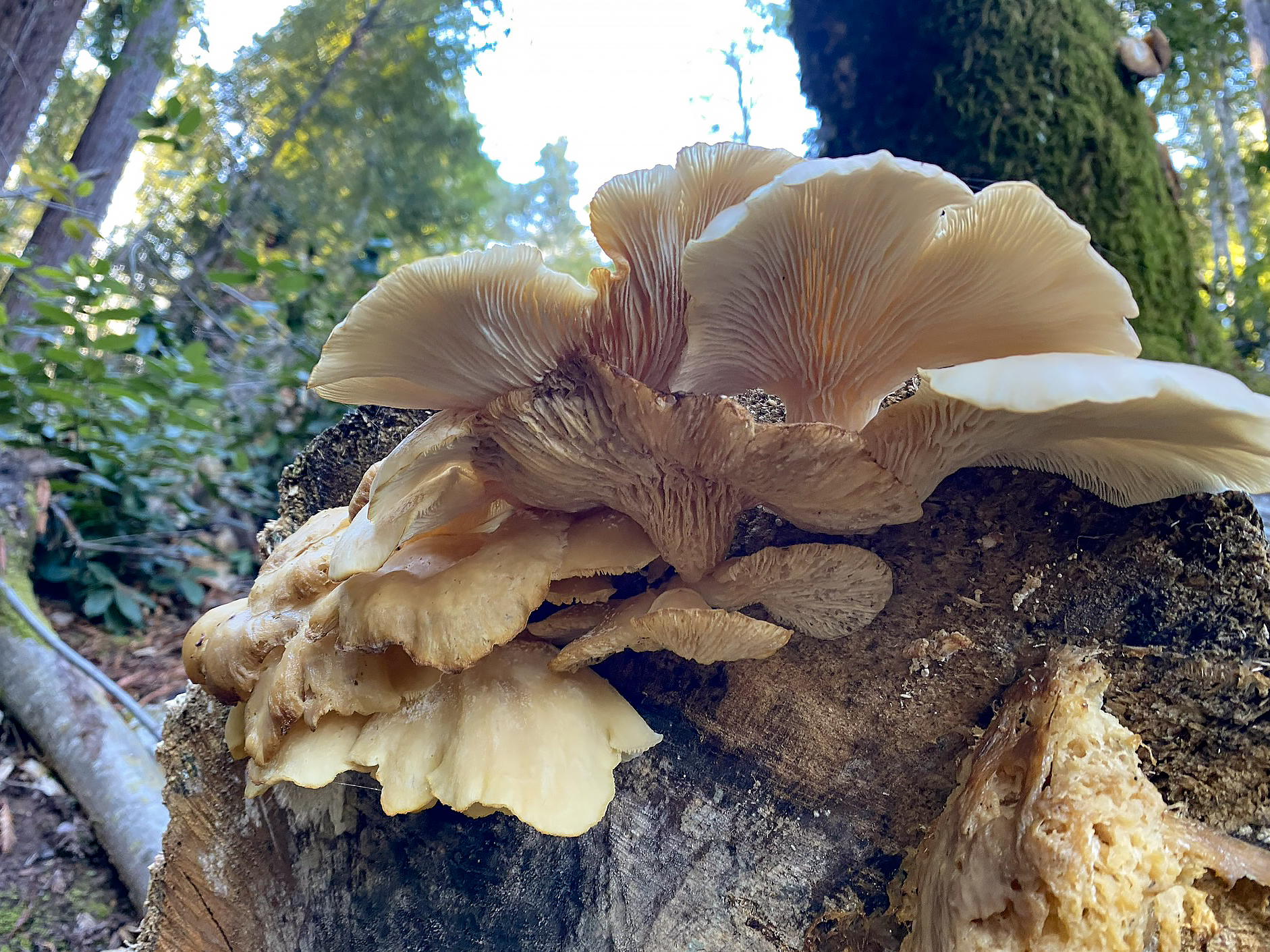
Oyster Mushroom
Pleurotus ostreatus
A common cultivated and homegrown mushroom, oyster mushrooms are found on decaying hard wood trees. That said, they can often be spotted high up on the trucks of living deciduous trees as well. An all around excellent fungi, oysters are tasty, considered medicinal and have a fascinating mycelium that contributes to decomposing hardwood and can even break down petroleum products!

Fly Agaric
Amanita muscaria
Easily identifiable and often considered the “quintessential” mushroom. Found under a variety of deciduous coniferous trees, fly agaric is infamously known for its psychoactive and hallucinogenic properties, making it most assuredly poisonous.
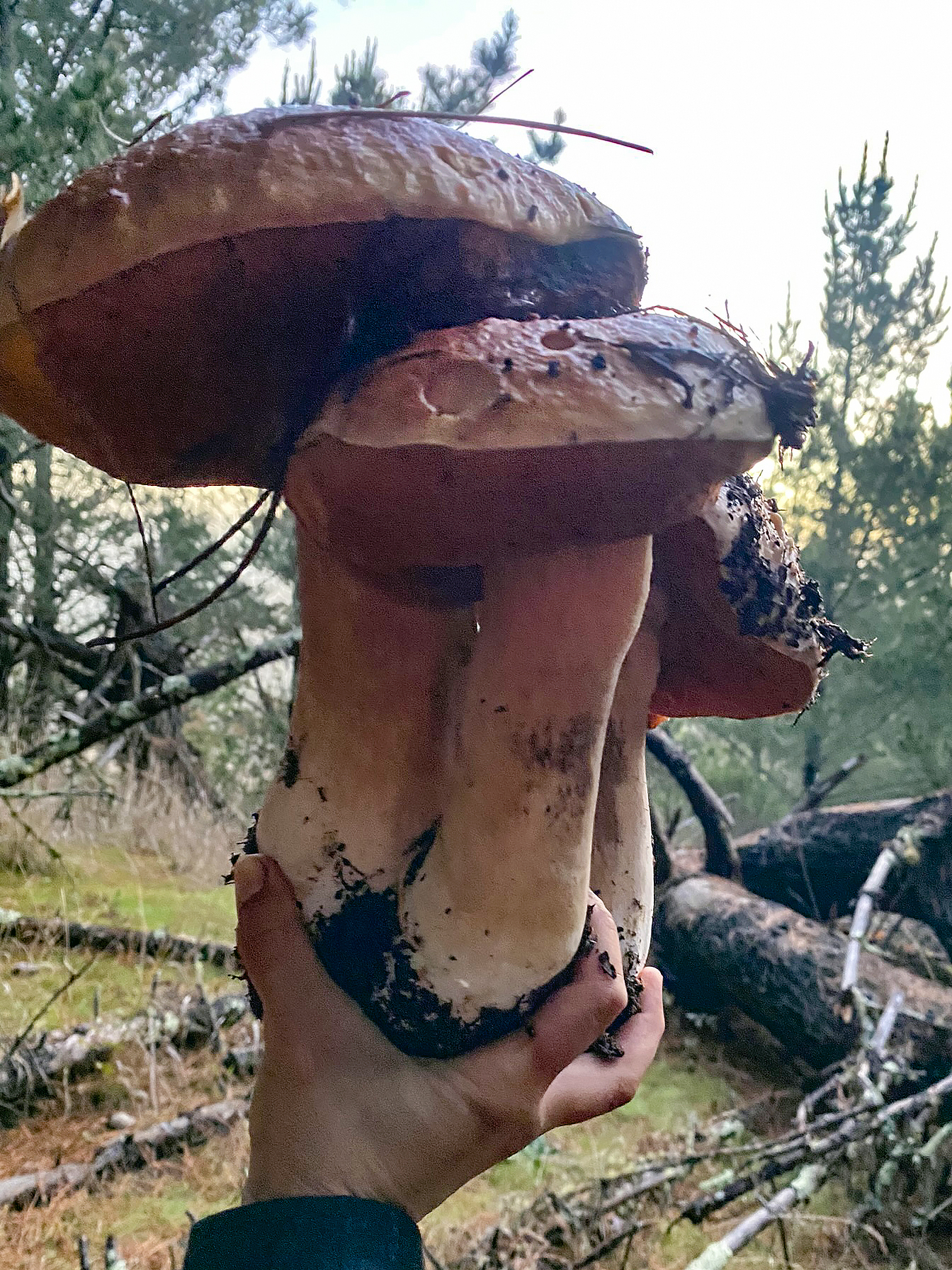
King Bolete
Boletus edulis aka wild porcini
Of all the mushrooms to seek out, the king bolete is in my top three favorites to look for. Not only are they incredibly tasty (I like to dry them out and make them into soup stock), but they have a short window between emergence and peak harvest making the foraging effort even more exciting! Wild porcinis, like all boletes, have pores instead of gills under their caps, assisting in the identification process. They range in size from quite small to very large (as pictured) and are generally found here on the coast in late fall around pines and amongst the duff.
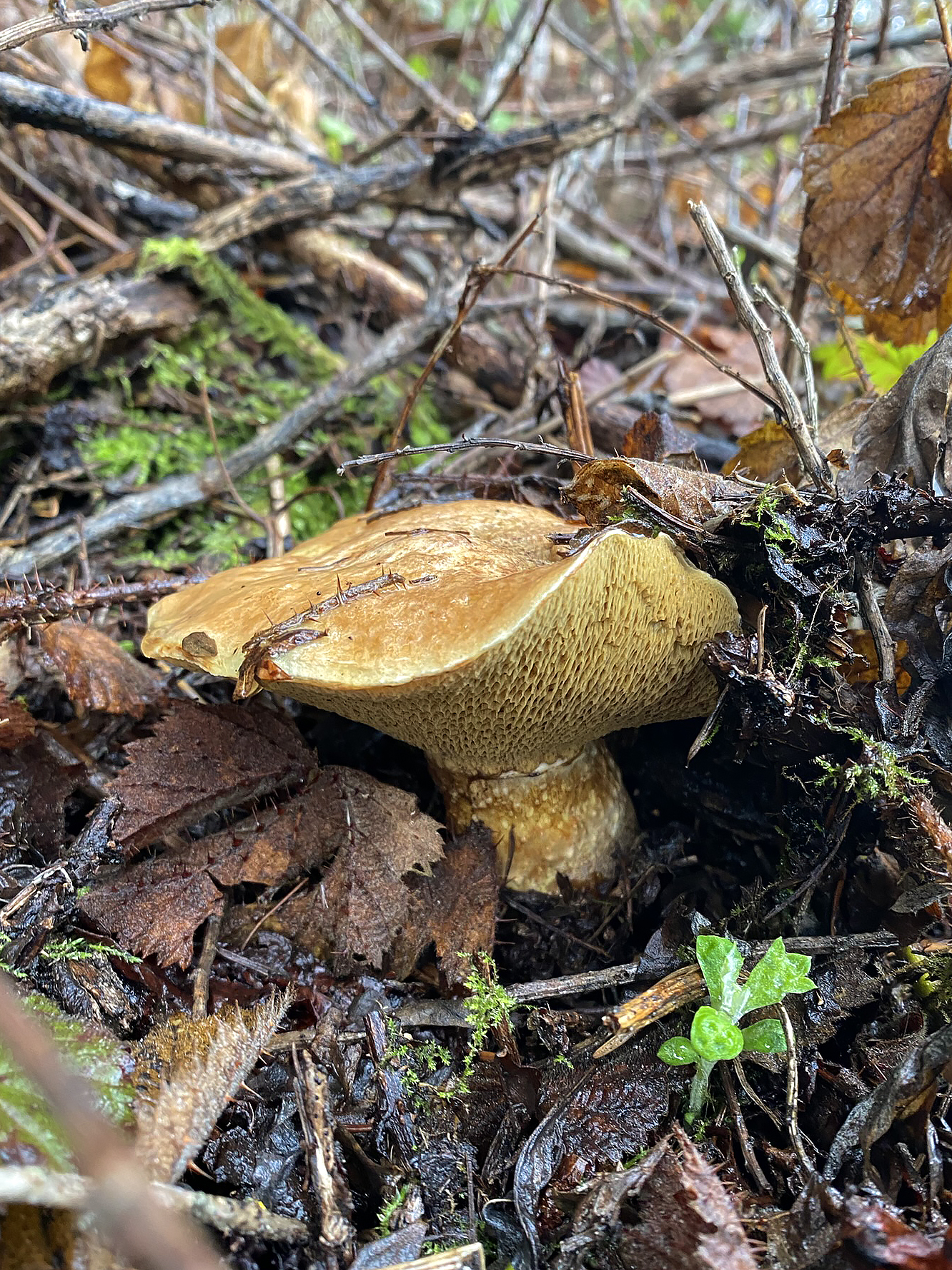
Slippery Jacks / Velvet Bolete
Suillus luteus / Suillus variegatus
The start of winter 2024 in Pescadero brought with it a significant explosion of boletes— or mushrooms with pores instead of gills. Among the most common specimens were the slippery jacks. Widespread in North America, but not native, they are considered to be a delicious mushroom and are recognized by their slimy caps. They share a symbiotic relationship with pine roots and are found in moist soil conditions around pine trees. There are many subspecies of Suillus, and I often have a hard time getting the IDs 100%. I suspect this particular specimen may be a velvet bolete as it is a bit lighter yellow and doesn’t have the skirt around the base of the stem that is associated with slippery jacks. However, all these characteristics can show up in aging slippery jacks, which demonstrates how tricky mushroom identification can be and why it’s important to not eat any wild mushroom if you are even slightly unsure!
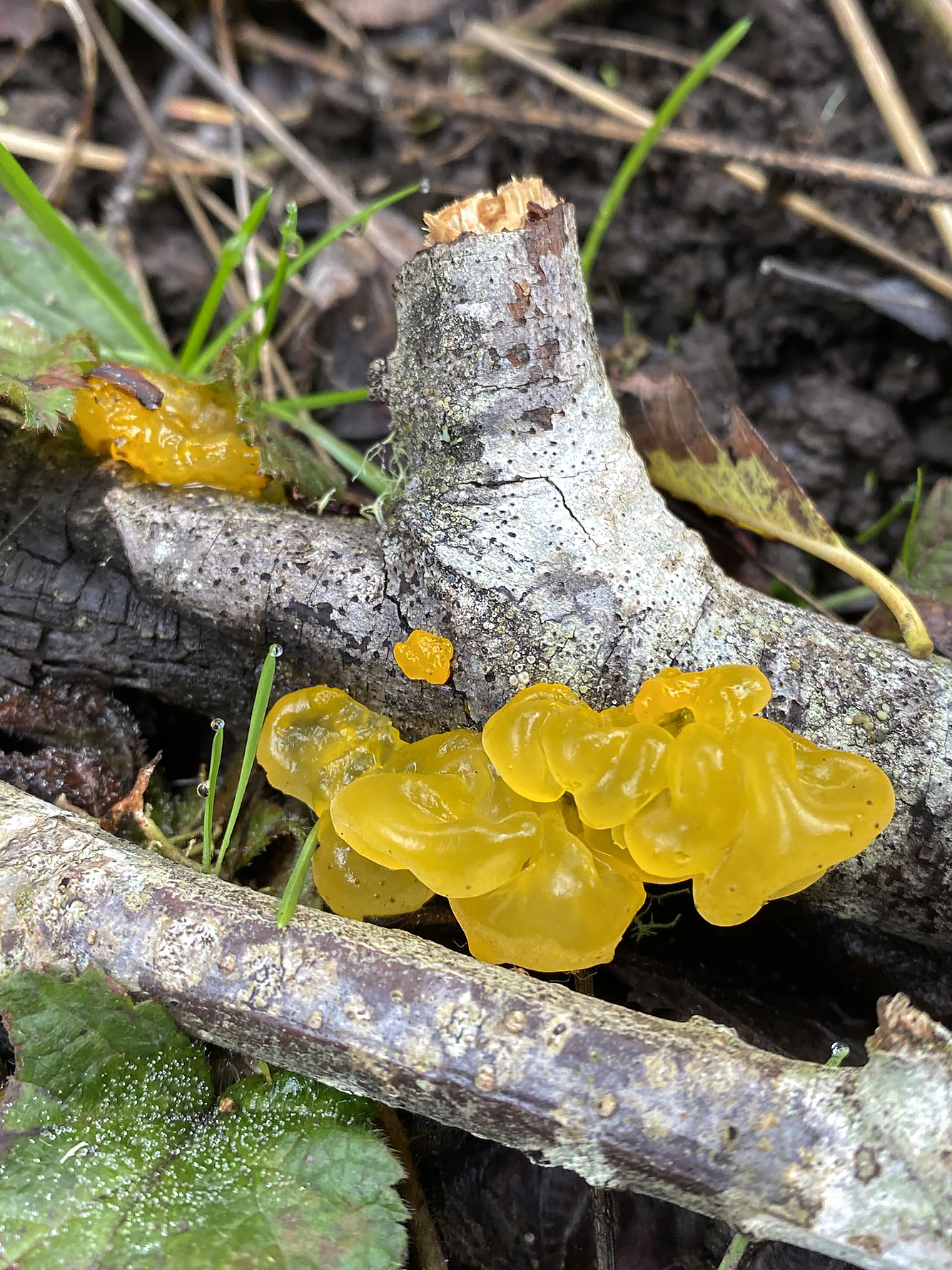
Orange Jelly Spot
Dacrymyces chrysospermus
Common to happen upon after rainy weather, the orange jelly spot tends to emerge in the cracks of trees and on fallen branches and twigs in wooded regions. Often confused with its close friend, Tremella aurantia, or common witch’s butter, it differentiates as it dissolves into a translucent, jelly blob and gets wet as it ages; whereas, common witch’s butter holds it bright, golden color and turns leathery with age. While orange jelly spot is perfectly edible, I do not recommend eating it unless you find yourself in a survivalist’s pinch; not a delightful culinary experience to say the least.
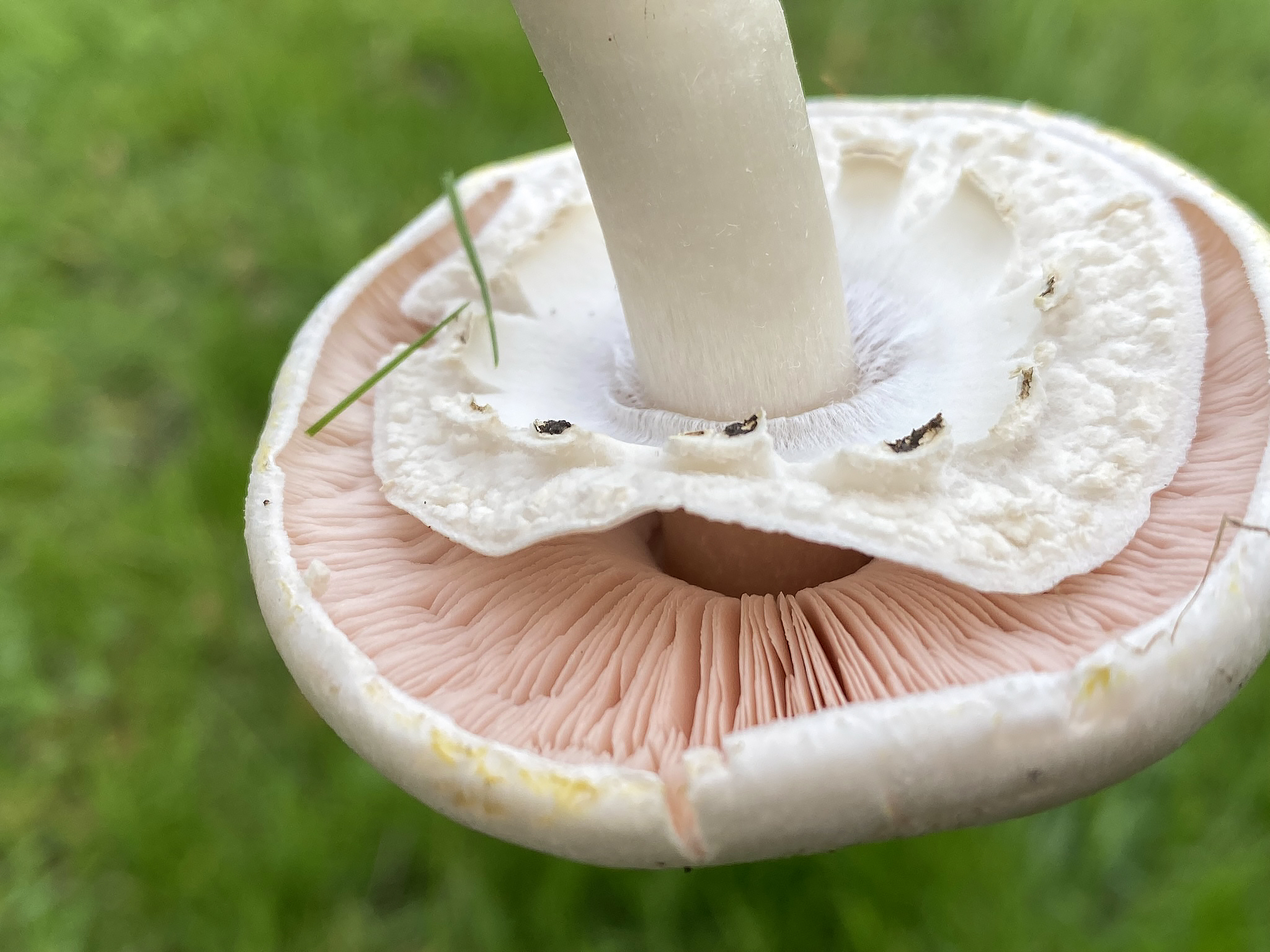
Meadow mushroom
Agaricus campestris
I find meadow mushrooms to be incredibly gorgeous. Especially when you find them freshly opened, before their pale pink gills begin to brown as the mushroom ages. Like its name, these fungi are commonly found after rain in grassy areas. A very delicious edible mushroom, but shares a lot of similarities with some very poisonous look-alikes. The fresh, sweet mushroomy smell and lack of color when the stem is bruised helps to positively ID this specimen. If you are unsure of any mushroom’s identification, be safe and don’t eat it!
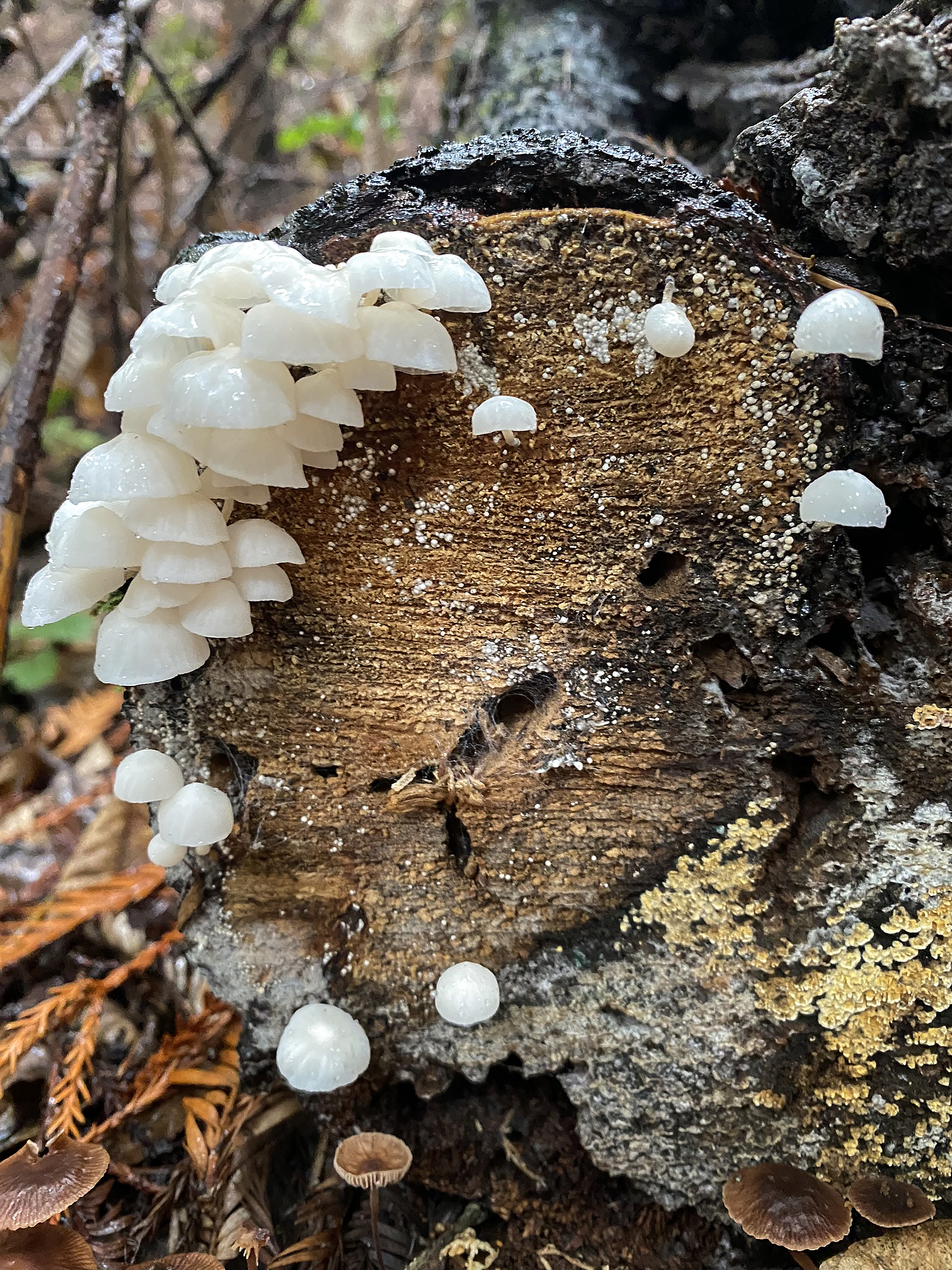
Fairy Parachutes
Marasmiellus candidus
Found growing on and in detritus, twigs and dead hardwoods in moist woods, fairy parachutes are as every bit magical as their name implies! Almost always growing in clusters, they remind me of a special parade running down old logs and twisting through burn scars. I have found many in the surrounding Pescadero area following the CZU complex fire in 2020. I find it so special to see the tiny, bright, whimsical fungi emerging from the dark, wet ashes.

The Prince
Agaricus augustus
A very impressive, HUGE specimen emerging in the early spring and can be found up until colder weather in November. The prince can smell quite sweet and its odor is often likened to marzipan or almond extract which contributes to confirming specimen ID.
Resources and further reading:
For community discourse and identification:
- iNaturalist.org and the SeekApp by iNaturalist
For stories centered around mushrooms:
- Mushroom at the End of the World: On the Possibility of Life in Capital Ruin, by Anna Tsing
- In Search of Mycotopia: Citizen Science, Fungi Fanatics and the Untapped Potential of Mushrooms, by Doug Bierend
For identification and tips, tricks and resources to keying out fungi safely in the Coastal California region and beyond:
- Mushrooms of the Redwood Coast: A Comprehensive Guide to the Fungi of Coastal California, by Christian Schwarz and Noah Siegel
- Mushrooms Demystified, by David Arora
- Dr. Fun Guy’s Passport to Kingdom Fungi, by Dr. Gordon Walker (recently published)
- Hunting Mushrooms: How to Safely Identify, Forage and Cook Wild Fungi, by Barbara Batokova (recently published)